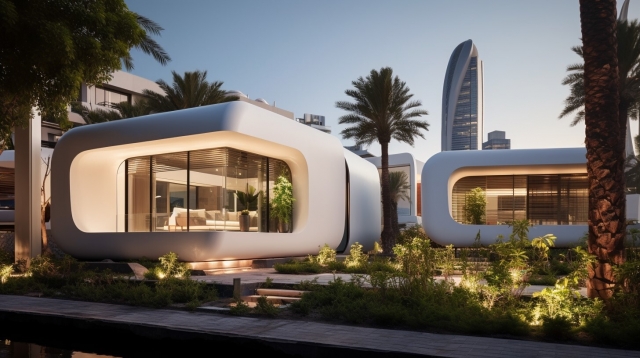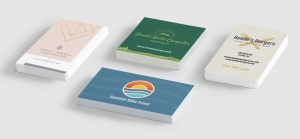Dubai, known for its breathtaking skyline and luxurious lifestyle, is also home to a diverse array of architectural styles that grace its villas. From modern marvels to traditional Arabic designs, each villa tells a unique story, making painting projects in this vibrant city a fascinating endeavor for professionals in the field of Villa Painting Service in Dubai. Let's delve into the experience of painting villas in Dubai, exploring the nuances of different architectural styles and the challenges and rewards they bring.
Modern Marvels: Contemporary Elegance
Dubai's skyline is synonymous with innovation and modernity, and its villas reflect this ethos with sleek lines, expansive glass facades, and minimalist aesthetics. Painting these modern villas requires a keen eye for detail and precision. The choice of colors often leans towards neutral tones, enhancing the architectural features without overpowering them.
Case Study: The Glass Villa
One notable project involved painting a stunning glass villa in Dubai Marina. The challenge was to complement the villa's transparent structure while providing privacy and aesthetic appeal. The solution was a blend of subtle earth tones that harmonized with the surrounding environment, creating a seamless transition between indoors and outdoors.
Embracing Tradition: Arabic and Islamic Influences
Dubai also treasures its cultural heritage, which is prominently reflected in villas that showcase traditional Arabic and Islamic architectural styles. These villas often feature intricate geometric patterns, arches, and ornamental details that harken back to a rich history of craftsmanship. Maintaining these architectural gems requires expertise not only in painting but also in Home Maintenance Service in Dubai, ensuring that every detail, from the delicate motifs to the durable exterior finishes, is preserved with utmost care and authenticity.
Case Study: The Traditional Courtyard Villa
In painting a traditional courtyard villa in Al Barsha, emphasis was placed on preserving authenticity while revitalizing its appearance. Rich hues of terracotta and ochre were meticulously chosen to highlight the villa's ornate wooden doorways and arched windows, breathing new life into its centuries-old charm.
Fusion of East and West: Contemporary Arabic Fusion
Dubai's architectural landscape also embraces fusion styles that blend Eastern and Western influences. These villas combine elements like domed roofs, arched windows, and modern materials, creating a unique aesthetic that appeals to cosmopolitan tastes.
Case Study: The Fusion Villa in Jumeirah
One such project involved painting a fusion villa in Jumeirah, where modern amenities met traditional motifs. Vibrant colors inspired by Arabian spices were employed to accentuate the villa's distinctive architectural elements, achieving a harmonious blend of past and present.
Challenges and Rewards
Painting villas in Dubai presents a set of challenges unique to its environment and architectural diversity. The extreme climate, with scorching summers and mild winters, requires paints that can withstand temperature fluctuations and high humidity levels. Additionally, the diverse architectural styles demand versatility and expertise in handling different materials and design nuances.
Navigating the Climate
The desert climate of Dubai poses challenges for painting projects, necessitating careful consideration of paint durability and weather resistance. Specialized coatings that offer UV protection and thermal insulation are crucial for maintaining the integrity of villa exteriors under the harsh sun.
Adapting to Architectural Diversity
Each architectural style requires a tailored approach to painting techniques and color selection. From the precise application of stucco finishes on Arabic villas to achieving seamless matte textures on modern surfaces, versatility and attention to detail are paramount.
Client Satisfaction and Community Impact
Despite the challenges, the rewards of painting villas in Dubai are abundant. Transforming a villa through expert craftsmanship not only enhances its aesthetic appeal but also contributes to the overall ambiance of the neighborhood. Client satisfaction is often measured not just in the quality of the finish but in the transformation of living spaces into personalized havens that reflect individual tastes and cultural heritage.
Conclusion
Painting villas in Dubai is a journey through architectural diversity, where every stroke of paint tells a story of craftsmanship, cultural heritage, and adaptation to a dynamic environment. From modern marvels that define the city's skyline to traditional gems that cherish its past, each villa presents a canvas for creativity and precision. As Dubai continues to evolve as a global hub of architecture and design, the role of painting professionals remains integral in preserving and enhancing its built environment. Popular Wall Painting Techniques Used In Dubai encompass a variety of styles, from intricate stenciling that reflects Arabic motifs to contemporary techniques like textured finishes that add depth and character to villa interiors and exteriors alike.
Frequently Ask Questions
How do you choose paint colors for different architectural styles in Dubai?
Choosing paint colors involves a combination of client preferences, architectural elements, and environmental considerations. For traditional villas, earth tones and rich hues are often preferred, whereas modern villas may benefit from neutral palettes that complement contemporary design.
What are the challenges of painting villas in Dubai's climate?
Dubai's climate presents challenges such as high temperatures, humidity, and sandstorms, which can affect paint application and longevity. Using weather-resistant paints and scheduling work during milder seasons are essential strategies to mitigate these challenges.
How important is cultural sensitivity when painting traditional Arabic villas?
Cultural sensitivity is paramount when painting traditional Arabic villas, as these structures often hold significant historical and cultural value. Respecting architectural integrity and using authentic materials and techniques are key to preserving their authenticity.






